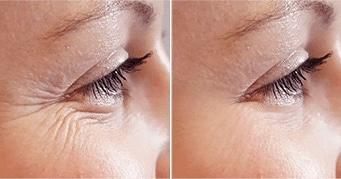
PRP is a new, natural filler and cutting-edge medical treatment to treat a wide variety of conditions from injuries, to hair loss, under-eye hollows, and skin conditions such as wrinkles or scars. PRP Therapy is a safe and effective way to stimulate the growth of new cells and tissue and offers a number of advantages over traditional methods. As such, it’s quickly becoming a go-to treatment for many medical professionals. PRP Therapy is long-lasting and provides lasting results. Many patients report improved skin tone or texture after just one treatment!
Platelet therapy is quickly becoming an integral aspect of cosmetic treatment, and it could be just what you need to look and feel your best. If you are looking for a safe and effective way to improve your appearance and your skin’s overall health, schedule a consultation with one of our specialists today!

Platelet Rich Plasma, or PRP, has been an evolving new therapy in the field of Regenerative Medicine for well over a decade. It originated with studies done at Harvard University using a method to enhance growth factor production from blood samples by exposing them to scored glass beads in a test tube after being incubated over a period of 12-24 hours. The cellular growth factors secreted are extracted and then injected into areas of the body needing repair.
I first observed this procedure when in Germany many years ago. I was amazed at the rapid healing of musculoskeletal injuries and chronic pain issues that patients experienced. At the time, the therapy was not approved by the FDA in the United States except in the field of Veterinary Medicine. Eventually, PRP extraction methods were approved by the FDA in the US. The procedure used a blood sample from the patient that then has growth factors from platelets extracted by a special centrifuge. The growth factors act as a type of cellular “fertilizer” and support the growth and repair of damaged cells and connective tissue. The growth factors go by such names as Interleukin 1 receptor antagonist, Thymosin Beta 4 (TB4), Phospholipase A2, Platelet Activation Factor, Serotinin, Calcium, and Thromboxane A2. Also present in the purified growth factor array is Epidermal Growth Factor, Fibroblast Growth Factor, Keratinocyte Growth Factor, Connective Tissue Growth Factor (CTGF), Granulocyte Macrophage Colony Stimulating Factor (GM-CSF), Insulin Growth Factor (IGF1), Vascular Endothelial Growth Factor (VEGF), Platelet Derived Growth Factor (PDGF). All of these peptides are intermediaries that support the cell growth, repair, rejuvenation and overall function. Therefore, they optimally support the healing of many forms of damaged ligaments, tendons and connective tissue.
PRP has become very commonplace among professional athletes. Well-known celebrities such as Steph Curry and Tiger Woods have used PRP to recover from injuries.
In my experience, oftentimes a single injection can be significantly helpful in restoring overall function and cell integrity. Chronic pain can often be improved with one injection. Most often improvement may require 2-4 injections over a period of weeks or months. Often a question is how does PRP compare to stem cell therapy. By contrast Stem Cell therapies involve using an autologous extract of adipose (fat) tissue, which are rich in stem cells, and injecting that into the area of the body needing repair. The difference is that the stem cells can then replace damaged cells. It is thought by many researchers that the PRP can enhance stem cell migration to a damaged area.
A growing number of patients are seeking natural solutions like Platelet-Rich Plasma (PRP). PRP has been around for some time, and offers a minimally invasive approach for personalized care.
PRP involves a short in-office process that utilizes your own blood. After a standard blood draw, a specially designed tube is used to separate the platelets from other components naturally found in blood, like red blood cells (RBCs).
A 3-minute spin in a centrifuge reveals a golden colored PRP concentrated. That final solution is carefully collected based on your providers proposed treatment plan.
Treatments tend to last about 30 minutes per focus area. Some patients may experience changes within one treatment, but individual results may vary. Consult your practitioner to develop a plan that is best suited for your desired outcome.
While there is little to no risk of rejection, post treatment, patient’s have described some redness, tingling or mild bruising in the treatment area. Speak to your provider before returning to work or resuming normal activities.
Currently innovative options like PRP are not typically covered by health insurance. Speak with your provider about your individual plan and if there are any financial paths available.